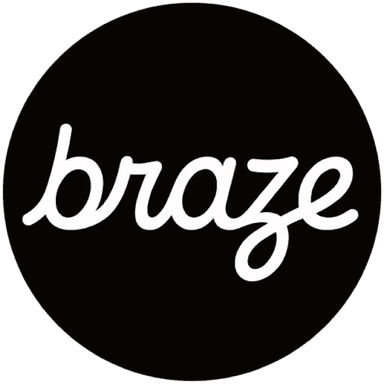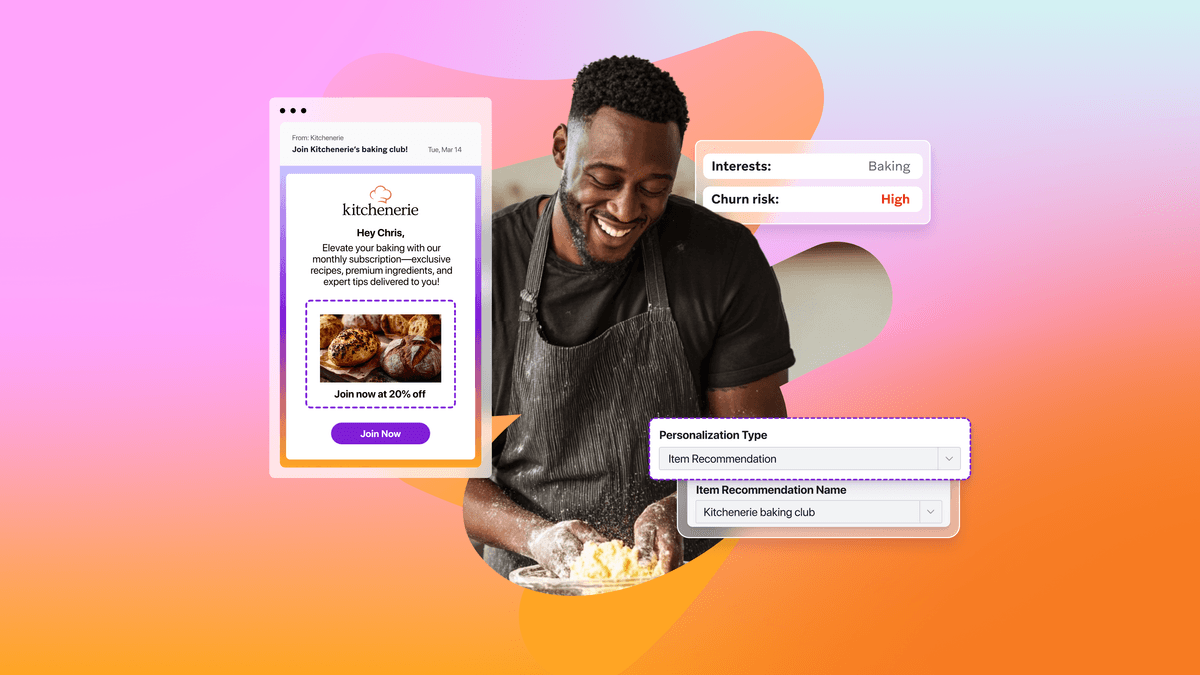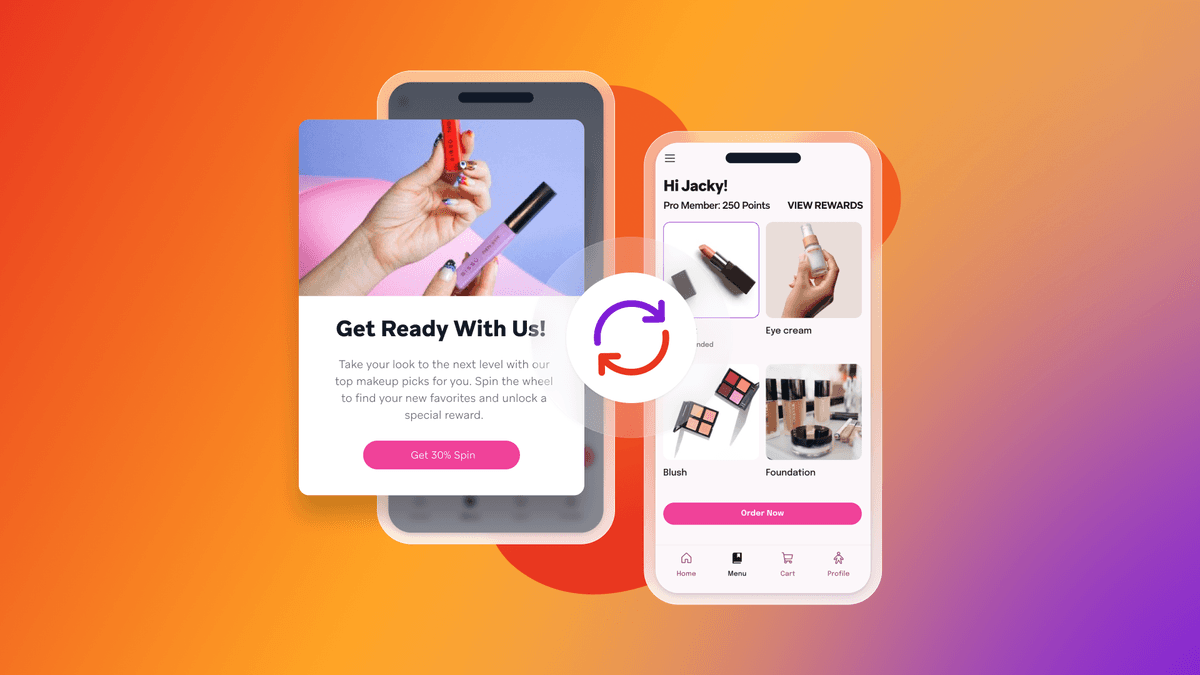Published on August 20, 2025/Last edited on September 09, 2025/13 min read


Keeping customers around is one of the keys to sustainable growth. Brands looking to gain insight to understand why people stay, why they churn, and what they can do to change the outcome, use customer retention analytics. With this data, they can improve customer experience, loyalty, and lifetime value in real time.
In this article, we’ll break down what customer retention analytics involves, which metrics matter most, the different types of analysis, and how to turn insight into action that actually moves the needle.
Contents
Customer retention analytics refers to the process of collecting, analyzing, and interpreting data related to customer behavior and engagement over time, with the primary goal of understanding and improving customer retention rates. By identifying patterns in behavior, sentiment, and engagement, marketers can make smarter decisions about how to keep more customers around for longer.

Unlike general performance metrics, retention analytics focus on uncovering what drives long-term value. Rather than looking at churn numbers after the fact, analyzing retention signs can help brands to spot early signals, track trends across segments, and use that insight to shape their customer experience, messaging, and lifecycle strategy.
Many brands use customer retention analytics software to centralize this data and surface actionable insights. These tools pull from sources like product usage, transactions, support interactions, and campaign performance, giving teams a more complete view of customer health across channels.
Retention analysis reveals where value is being lost, and where you can take action. While acquisition often takes the spotlight, long-term growth often depends on keeping the customers you already have. Even small improvements in retention can drive meaningful revenue gains, especially for subscription-based and repeat-purchase businesses.
Loyal customers tend to spend more, engage more, and refer others. They’re more likely to explore new offerings, respond to personalized messaging, and stick with you through bumps in the journey. Retention is a signal of how well your brand delivers ongoing value.
By grounding your strategy in customer retention data, you can spot early warning signs, identify key drop-off points, and build journeys that keep more people engaged for longer.
You can’t improve retention without knowing what to measure. These metrics offer a clearer picture of how your customers behave over time, highlighting both loyalty signals and churn risks.
Customer retention rate tells you how many customers stick with your brand over a set period, while churn rate shows the flip side—how many leave. Both metrics help track long-term performance, especially when viewed across different segments or cohorts.
CLV estimates the total revenue a customer is expected to generate throughout their relationship with your brand. When paired with customer acquisition cost (CAC), the LTV-to-CAC ratio shows how efficiently you’re turning spend into sustained value. A healthy ratio typically means your retention efforts are paying off.
NPS and CSAT provide a snapshot of customer sentiment, but they shouldn’t exist in a vacuum. Use them alongside behavioral data to understand whether high scores actually translate to retention and revenue.
How often customers return, and how actively they engage, can signal habit formation and brand affinity. These metrics are especially valuable for eCommerce brands, subscriptions, and mobile apps looking to drive ongoing interaction.
Customer retention analytics aren’t one-size-fits-all. Different types of analysis serve different purposes. Some help you understand the past, others help you predict the future or decide what to do next. Knowing which type to use (and when) helps you move from passive tracking to active retention strategy.
Descriptive analytics looks at historical data to surface trends. You might analyze churn rates over time, usage patterns by cohort, or campaign engagement across customer segments. It’s the baseline for understanding where things stand, and where they may be slipping.
This type of analysis digs into the “why” behind churn or engagement drop-offs. It helps you identify root causes, such as gaps in onboarding, product friction, or delayed support response times. Pairing this with customer feedback adds a layer of qualitative insight.
Predictive analytics uses historical and behavioral data to forecast which customers are most likely to churn. These models often take into account engagement frequency, drop-offs in usage, and signals like NPS or support tickets. When done well, predictive analytics can help you prioritize outreach, personalize messaging, and deploy retention campaigns at the right time.
This approach focuses on comparing retention across fixed time intervals—weekly, monthly, quarterly—to identify long-term patterns. Often used in cohort analysis, periodic analytics helps you spot which groups retain better, when drop-off typically occurs, and how seasonality or product changes influence behavior.
Retrospective analysis looks backward from the present to identify customers who have already disengaged. Instead of starting with a specific date or cohort, it identifies users who haven’t returned within a defined timeframe. This is especially useful for triggering re-engagement or winback campaigns based on inactivity.
Prescriptive analytics turns insight into action. It recommends next steps—whether that’s triggering a winback campaign, adjusting your onboarding flow, or offering a targeted incentive. It’s where retention strategy becomes operational, helping teams move from knowing to doing.
Retention doesn’t improve by chance—it improves by design. And that starts with a clear framework for turning data into action. Here’s how to build a customer retention analytics practice that delivers real impact:
Start by identifying what success looks like. Are you aiming to reduce churn by a certain percentage? Improve CLV in a specific segment? Increase reactivation rates after the first 30 days? Clear goals help you choose the right metrics and tactics to focus on.
To get a full picture of the customer journey, pull together data from across your stack—product usage, transaction history, email engagement, support interactions, loyalty programs, and more. Consistent, unified data is the foundation of any effective retention strategy.
Effective segmentation lets you identify patterns and intervene more precisely. Use methods like RFM analysis, behavioral triggers, or lifecycle stages to group customers by value, risk level, or intent.

Look for early warning signs: Declining engagement, incomplete onboarding, unanswered support tickets, low repeat purchase rates. Diagnostic and predictive analytics can help you pinpoint weak spots before they lead to churn.
Turn your insights into action, then measure what happens next. Whether it’s a triggered message, an offer for reactivation, or a revamped onboarding sequence, tracking results over time is key. Build in regular reporting cycles to keep teams aligned and spot new trends early.
For more insights into customer retention, download Retention by Design: Your Anti-Churn Playbook
KFC India scores a loyalty win with finger-clickin’ retention analytics
KFC India needed a more effective way to keep digital customers engaged and coming back for more. With a growing user base and increasing reliance on mobile ordering, the brand recognized that one-size-fits-all messaging wasn’t enough to drive long-term loyalty.
Despite strong brand recognition, KFC India saw room to improve digital engagement and drive more repeat purchases through its app. The team wanted to build on the success of a previous gamified campaign and use customer behavior data to power a more personalized, cross-channel retention strategy.

To turn engagement into retention, KFC India launched a gamified experience called “Bucket It,” where users could win rewards like free menu items and discounts. The campaign centered on driving participation and redemption through a cross-channel approach that was guided by real-time customer retention analytics.
Using in-app messages, push notifications, email, and SMS—each personalized with unique coupon codes and offer attributes—KFC India targeted users based on recent behavior. For example:
To monitor and optimize performance, KFC India tracked user interactions across channels in real time using Braze Alloys partners Branch and Snowflake. Engagement data informed ongoing tweaks to game mechanics, messaging cadence, and user flows—helping the team adapt to changing behaviors and maintain campaign momentum.
By combining behavioral data, cross-channel messaging, and real-time performance insights, KFC India turned a gamified promotion into a meaningful retention driver.
Retention drivers can look very different depending on your business model. A high churn rate in SaaS might point to poor onboarding, while in eCommerce it could reflect gaps in post-purchase engagement. That’s why retention analytics works best when it’s aligned with the realities of your industry, your product, and your customer journey.
In software-as-a-service, retention hinges on product usage and seeing long-term value. Key signals include feature adoption, session frequency, and session length. Low engagement in the first 30 days often correlates with higher churn risk. Retention analytics in SaaS helps teams prioritize education flows, trial conversion campaigns, and expansion strategies.
For eCommerce brands, retention often comes down to habit. Metrics like repeat purchase rate, time between purchases, and average order value provide insight into customer loyalty. Retention analytics can also reveal seasonal buying trends or signals that a shopper is starting to lapse—making it easier to trigger timely re-engagement offers.
Subscription churn can spike at billing renewal points or after the initial trial. Retention analysis helps track key behaviors like skipped payments, downgrade patterns, and content consumption to identify when—and why—customers might cancel. Prescriptive tactics like pausing subscriptions, offering incentives, or educating users on valuable features and content can reduce voluntary churn.
Retention for mobile hinges on usage frequency, session length, and value delivered in the user journey. Analytics can highlight drop-offs during onboarding, in-app friction, or disengaged users before uninstall. Combined with messaging data, this insight supports lifecycle campaigns that re-engage and retain mobile-first audiences.
The right software can turn raw customer data into clear, actionable insights. But with so many tools on the market, it’s important to focus on the capabilities that support your goals—rather than just dashboards for dashboard’s sake.
Here’s what to look for when evaluating customer retention analytics software:
Look for platforms that bring together data from multiple sources—product usage, CRM, transactions, messaging, and support—so you can analyze retention in the context of the full customer journey.
Retention is time-sensitive. Choose tools that let you view and act on customer behavior in real time, so you can intervene before users churn—not just try to figure out what happened after.
The ability to segment customers based on lifecycle stage, behavior, or predictive risk helps you build tailored campaigns that actually move the needle. Bonus points if segmentation updates dynamically as customers interact with your brand.
Predictive models help you identify at-risk users early, prioritize outreach, and build smarter journeys in response. These models can also support audience scoring and help allocate retention spend more effectively.
Analytics are only useful if you can act on it. Look for platforms that let you move seamlessly from insight to engagement—whether that’s through built-in messaging tools or integrations with your marketing stack.
Customer retention analytics gives brands a way to focus on what really drives long-term value—understanding behavior, identifying opportunities, and acting with precision.
When teams have access to the right data, tools, and strategy, they can build experiences that feel relevant, timely, and worth coming back for. Whether you're building from scratch or refining an existing program, retention analytics helps you make smarter decisions that support sustainable growth.
And as customer journeys become more complex, the ability to connect insight to action—across teams and channels—can be the difference between reacting late and building loyalty early.
Talk to our sales team today.
Customer retention analytics are metrics based on customer data that help you understand why people stay or churn. It helps brands make data-informed decisions to improve loyalty, reduce churn, and increase customer lifetime value.
You can use data analytics to identify key drop-off points, segment customers by behavior, forecast churn risk, and deliver personalized messaging that addresses customer needs before they disengage.
Important metrics include customer retention rate, churn rate, customer lifetime value (CLV), net promoter score (NPS), customer satisfaction score (CSAT), repeat purchase rate, and engagement frequency.
The main types of customer retention analysis include descriptive (what happened), diagnostic (why it happened), predictive (what will happen), and prescriptive (what to do next). You can also use periodic analysis to track retention trends over time, and retrospective analysis to identify customers who have already gone inactive. Together, these approaches provide a fuller picture of customer behavior and help teams take the right action at the right time.
Look for tools that offer unified data, real-time insights, predictive capabilities, and easy ways to activate campaigns based on customer behavior. The right platform helps turn insight into action at scale.
Sign up for regular updates from Braze.




